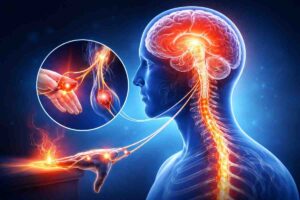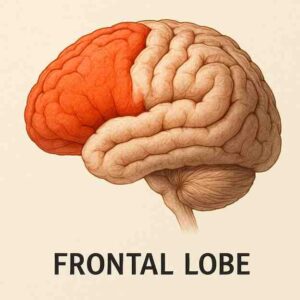Not every tumour in the brain is cancerous; not every cyst, a death call. Welcome to the bewitching world of ventricles where colloid cysts pop up in 3 people per million

“Hey, Mazda!” a senior ophthalmologist in the city called me in the middle of a bustling OPD. “I need you to see a patient for me today,” she insisted. I never say no to seeing a patient, no matter how busy I am, but out of curiosity, I asked what the urgency was. “This 35-year-old boy came to me yesterday to change his glasses,” she began. I later learned that she’d called him a boy because she’d known him since he was one. “He said he felt his number needed a correction because he couldn’t see clearly. When I examined him, his eyes were fine, but when I looked inside with my fundoscope, the optic nerves looked swollen – almost like they were on fire!” she exclaimed. She was describing a condition where raised pressure inside the brain transmits on to the eye nerves, converting a pale off-white nerve into a scarlet haze. This appearance is because of the tiny haemorrhages within the miniscule vessels inside the nerve head that rupture from the raised pressure.
“Did you get an MRI of the brain?” I asked the next most logical question. “I sure did,” she said with glee, having discovered the source of his raised intracranial pressure. Oftentimes, the source of an eye problem is in the brain, and it requires an astute ophthalmologist to decipher it. “There is a 2 cm colloid cyst within the third ventricle blocking the CSF pathway and causing hydrocephalus,” she read from the report. CSF is cerebrospinal fluid, responsible for providing nourishment and protection to the brain. “Send him over,” I requested, and within a couple of hours, he was sitting in front of me in my clinic with his father.
Rehan was a gentle-mannered boy, dressed in a simple striped shirt with baggy white trousers that made him look a little older than he was. His father sat stoically next to him, silently awaiting my verdict. “I have a lot of headaches, but I’ve been ignoring them. I thought it was because of my blurry vision,” he spoke, his forlorn look forbearing his folly. “He even fainted once for a few seconds, but we thought it was because he hadn’t eaten anything,” his father interjected.
After examining him, I plugged in his MRI and switched on the white light of the X-ray box to show him a cyst sitting in the centre of his brain. “This cyst is filled with colloid material,” I explained. “Colloid is gel or toothpaste-like material within this cyst that is blocking the normal fluid channels of the brain and causing the pressure in the brain to build up. This is why you have the headache and hazy vision,” I explained. “What’s colloid?” he asked. “Milk is a colloid. Blood is a colloid. Whipped cream, mayo, butter, gelatin, and jelly are colloids,” I gave him the gist. “All we have to do is puncture the cyst and remove it completely to restore the normal fluid pathways,” I explained to the father, the son, and the Holy Spirit that was hopefully guiding us to make the correct decision.
“Is this a brain tumour?” Rehan asked. I explained that it was behaving like a tumour, but a non-cancerous one. “Any complications that one can expect if I don’t have surgery?” he asked. “Some people have been reported to die from the sudden build-up of pressure inside the brain, and if that doesn’t happen, you could lose your vision and memory over time,” I stated matter-of-factly. I didn’t want to scare him but simply express the truth. “And what are the complications if I do opt for surgery?” he asked. Realistically, I knew that there was a very small risk to life, and that the complications ranged from bleeding inside the brain or damage to structures that control memory or even consciousness, but I tempered it with, “Not to worry, you’ll be fine.”
This kind of a situation is a semi-emergency, so we scheduled surgery soon, in a few days. In the operation theatre, after general anaesthesia, we fixed his head with a clamp so that it wouldn’t move. During surgery, we used robotic navigation to guide us to the exact point 8 cm deep inside the epicentre of the brain. Once we removed a piece of bone and opened the dura, the covering of the brain, we found the brain to be extremely tense. To soften it, we tapped into the ventricle, releasing CSF to soften the brain. Once the brain was lax, we gently slid between the two hemispheres, separating the spider-like webs that traverse between the two and splaying the two main anterior cerebral arteries apart. The surgeon’s heart rate is usually double that of the patient during this manoeuvre, lest a vessel snaps. We then made an incision in the corpus callosum, the glistening band of white fibres that connects the two halves of the brain and allows for them to communicate with each other. Too small an incision and you won’t reach your target; too big of an incision and you can disconnect one part of the brain from the other and Rehan will be transformed into Rahim or even Rihanna.

Once we made that incision, we were inside the ventricle of the brain where CSF was flowing like mountain springs. Ventricles are cave-like spaces inside the brain that have the most spellbinding interiors. Tiny veins and arteries traverse its walls, while the fluffy choroid plexus, which secrets the CSF, lines its corridors like snowflakes atop a hillock. It is so beautiful that one could potentially get lost, and that’s why we have navigation to guide us. As we traversed a little deeper, we saw the cyst splaying apart the regular foramen that’s supposed to be there, distorting the fornices that arch and land on it, the pillars responsible for memory.
As intended, we punctured the cyst and thick and sticky yellowish white mucoid fluid emanated from it, deflating a robust cyst down to its defeated self. “I wonder how this gets lodged here,” my assistant asked at the oddity of an ugly cyst in such a pristine environment. “The human body is a gigantic liquid crystal; anything can happen anywhere,” I poeticized. I grasped the wall of the cyst and separated it from all its attachments, snipping away at the tiny strands holding it down. We disconnected it, circumferentially preserving the important veins in the area, and removed it completely, opening up the pathways it was blocking. We gently retracted our instruments out of the great depths of danger, ensuring everything was just as clean as it was when we entered.
Rehan woke up a few hours later and made excellent recovery. When I saw him the next morning, I asked him how he was. “My vision is so much brighter, and the heaviness in my head has gone,” he said. “But I don’t remember having had surgery,” he confessed with intrigue. “I don’t even remember what I ate for breakfast a few hours ago,” he added. I was slightly unnerved and started wondering if I had knocked off the fornix, which is believed to play a key role in cognition and episodic memory recall. After such a perfect operation, how could I have left a young man bereft of his memory, I asked myself. I hoped that this was temporary.
“Relax, doctor, I’m just joking. I remember everything!” he teased, laughing at my ashen face.
After all he was just a boy.




